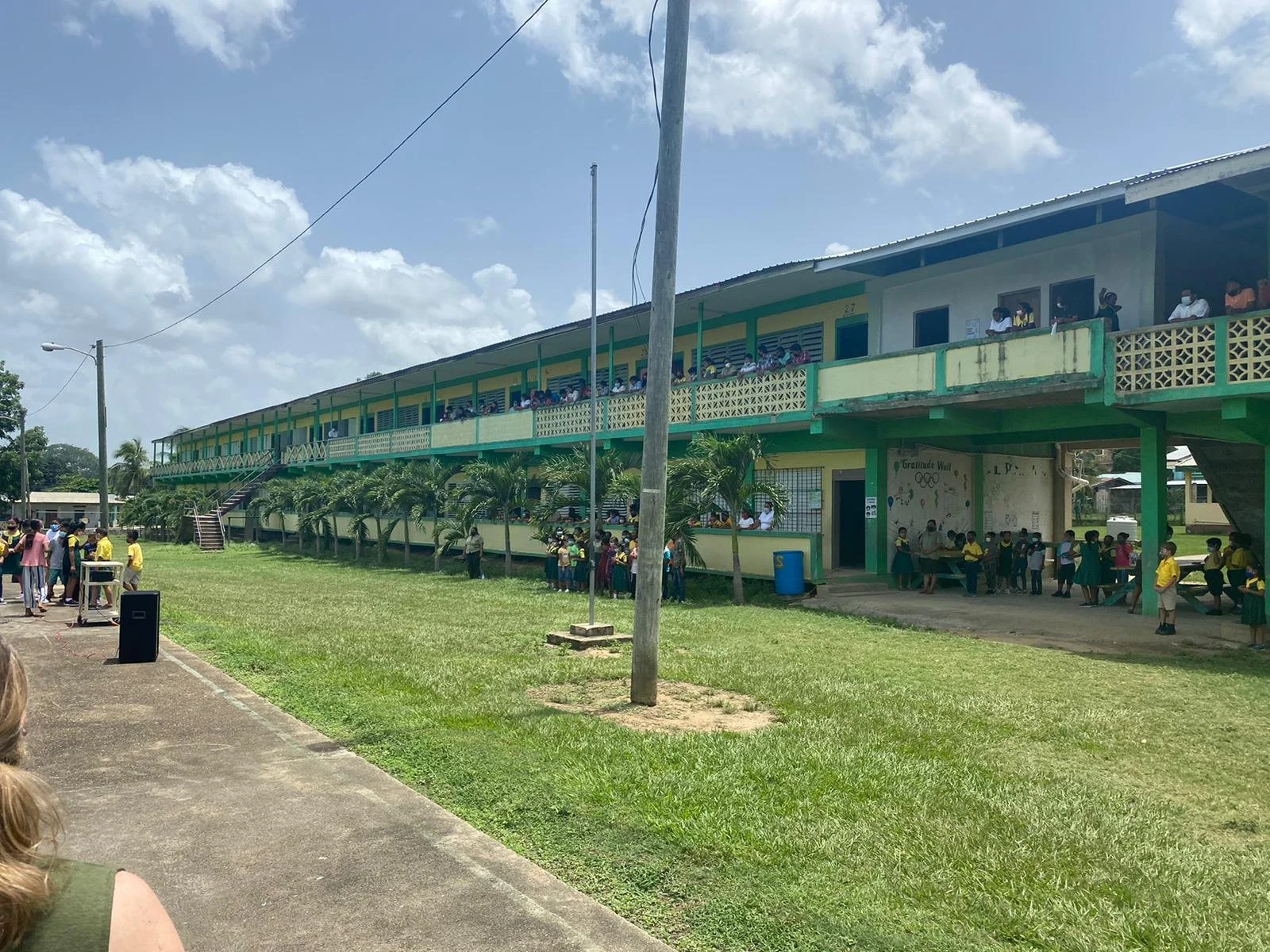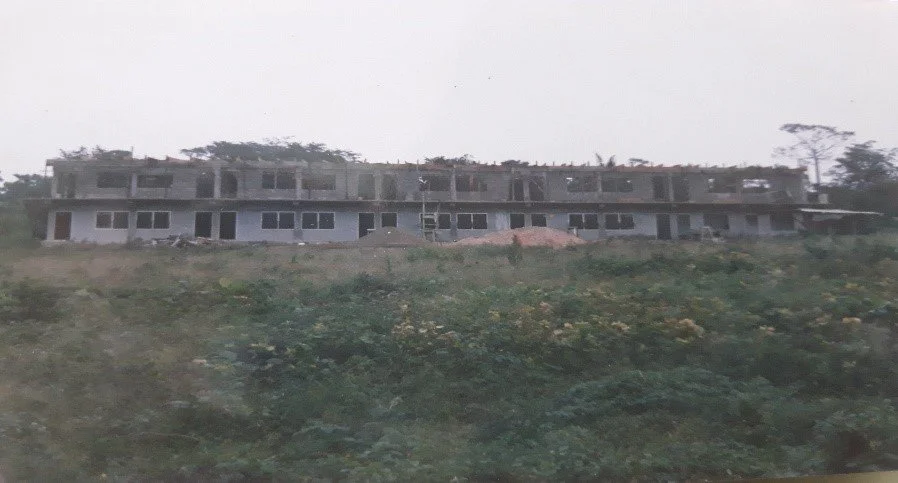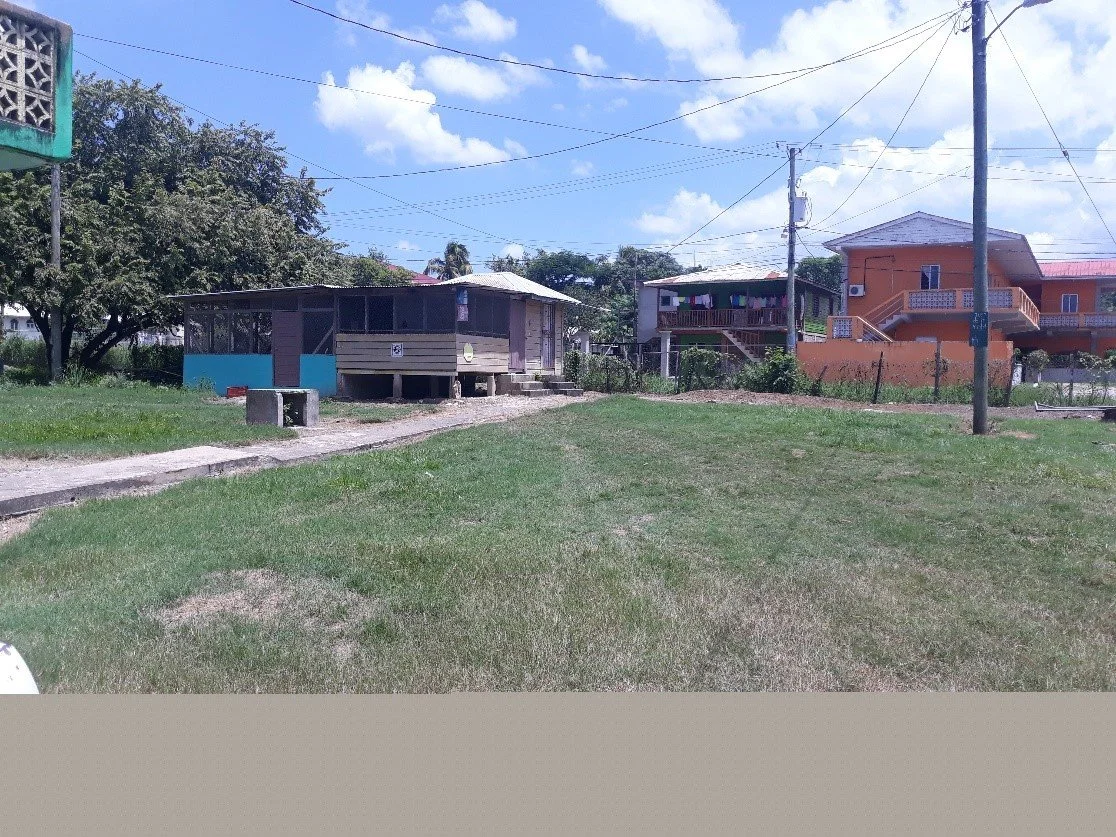History of Santa Elena Primary School
In the 1920s, Santa Elena was a small town with limited access to primary education, as the nearest facilities were located in San Ignacio. Recognizing the need for local schooling, two pioneering teacher leaders took the initiative to establish the Santa Elena Primary Roman Catholic School. The school was originally situated where St. Ignatius School now stands, overlooking the banks of the Macal River.
Current Location and Surroundings
Today, SEPS is located in the newer area of Santa Elena Town, at the corner of Requena and Bishop Street. Its main entrance is along Perez Street, which serves as the school's primary address. The campus is conveniently positioned approximately 200 yards from the Western Highway and just 150 yards from the district education center
The Community the School Serves
Santa Elena Primary Roman Catholic School serves the families of Santa Elena Town. The school is surrounded by homes on all sides, with most students living nearby. This close proximity allows parents to be actively involved, regularly visiting the campus to meet with teachers, bring lunch to their children, or join them for meals at the picnic tables. In the afternoons, parents often assist with school duties while picking up their children, reflecting a strong, supportive community spirit.
Our School’s Humble Beginning
The school began when two dedicated teachers, Maestro Garcia and Mr. Henry, recognized the need for formal education in the growing town. Initially, classes were held in a small church building with a thatched roof. With community support, a classroom was constructed near the church, followed by a cement building in the 1950s as the population expanded.
Further growth led to the church acquiring neighboring properties, including a two-story wooden house and another residence, expanding the school grounds. In the 1970s, a two-story extension was added, along with a small principal’s office. However, rising enrollment soon demanded more space. By 1992, the school expanded to a new location in Santa Elena Town with a two-story concrete building featuring nine classrooms and a principal's office. The upper division (Standards IV-VI) moved to this site under Principal Crescencio Pinelo, while the Infant/Middle Division remained at the original campus under Principal Mrs. Dorothy Cowo.
Space challenges persisted, leading to temporary arrangements and ongoing efforts for improvements. In 1994, Mrs. Cowo and a newly formed PTA launched a campaign to raise funds for safer facilities, as the existing classrooms had become unsafe. After negotiations and support from various funding agencies, including the Caribbean Development Bank, a vote determined that new classrooms would be constructed at the Upper School site. Despite setbacks, the PTA remained committed, ensuring progress continued for the betterment of the school community.
The Amalgamation Progress & Development
In September 2001, Santa Elena Primary School was established through the amalgamation of the Infant/Middle Division and the Upper Division, prompted by a growing student population and the need for expanded space and better infrastructure. Mr. Manuel Medina Sr. became the principal, and the school introduced two vice principal positions, resulting in an administrative team of a principal, two vice principals, and twenty-five teachers serving over 700 students. The campus included twenty-five classrooms (18 concrete and 7 metal), three bathrooms, and a principal’s office. However, the lower flat of a new building remained without electricity due to rain leakage.
Within four years, the student population grew to over 900, prompting the construction of additional classrooms. With support from the Area Representative, Rotary, Fr. Kevin Henderman, and Fr. Bob Hass, ten new rooms were added, and electricity was extended to all 20 classrooms. By the 2004-2005 school year, enrollment had risen to 966, with a staff of one principal, three vice principals, and thirty-two teachers.
The expanded infrastructure included two two-story concrete buildings, two metal buildings with a total of thirty-two classrooms, a library, a principal’s office, a staff room, and three multipurpose rooms forming an auditorium. The school also had three bathrooms with modern sewerage systems, a new bathroom built by the Social Investment Fund with showers, urinals, and washbasins, two storage rooms, a basketball court, and a football field. The former pit latrine was sealed and converted into a storage space. The school, occupying eight acres, remains the largest school compound in the area, offering ample space for student activities.
Infrastructure and Academics Continued Improvement
Continuous improvement in both infrastructure and academics has remained a priority, recognizing the ongoing need for growth. By the end of the 2007-2008 school year, with support from Rotary, Fr. Bob, and the P.T.A., we upgraded our electrical system and installed ceiling fans in all classrooms. Additionally, 25 computers were purchased to launch a computer program for Standard 4 and 5 students. Mr. Rafael Marin, then P.T.A. President, helped secure the computer room, install electricity, and provide internet access.
From 2001 onward, we have achieved notable successes, including being three-time Coca-Cola Spelling Bee National Champions and National Bishop Martin Cup Champions, along with other accomplishments in the Festival of Arts and various contests.
In the 2008-2009 school year, the computer program expanded with additional computers, allowing us to hire a full-time computer teacher. However, vandalism remained a concern, prompting the construction of a concrete and chain-link fence for enhanced security. By year-end, with assistance from BEL, Fr. Bob, the P.T.A., and school funds, we completed one full side and three-quarters of the other, covering about one-third of the perimeter.
A major achievement in 2009-2010 was the acquisition of a top-of-the-line duplicating machine, made possible through the hard work and cooperation of our dedicated staff. This upgrade was essential, as our student population surpassed 1,000, and the older machines required frequent repairs. Our staff, largely composed of trained teachers with Bachelor's degrees in Education and 20 to 30 years of experience, remains committed to delivering quality education, though we acknowledge there is always room for growth.
Further enhancing student opportunities, Governor-General Sir Colvile Young donated marching band instruments to our school during the year. As we meet one goal, new challenges and developments in education continue to drive us forward, ensuring we stay responsive to our students' evolving needs.
The Gift of Inclusion
Santa Elena Primary School's Special Education Program stands out as a cornerstone of inclusion, led by two dedicated and highly qualified teachers. Mrs. Celia Monroy, holding a Master’s Degree in Special Education, and Mrs. Yasmini Caliz, trained with NARCIE and an Associate Degree in Primary Education, currently teach 11 students with varying disabilities and learning disorders, ranging from Down syndrome to autism and dyslexia.
Established in 2009 with just eight students and a classroom in the library, the program received a dedicated building in 2011, thanks to a donation from Belize Natural Energy. The students, ages 5 to 14, participate fully in school activities, including fairs, mass, and sports days, and follow the same mission and vision as the rest of the school community.
Subjects taught include spirituality, physical education, and visual arts, along with specialized lessons in daily living and personal social skills. These essential skills cover practical tasks like handling money and shopping, as well as socializing and building self-esteem.
Enrollment requires parents to contact the Ministry of Education (MOE) to register their child. If a student shows readiness to transition into the regular classroom, the teachers work with the MOE to facilitate the process. Since the program's inception, five students have successfully transitioned into regular classrooms, reflecting the program's positive impact.
Enhancing School Facilities for Growth and Community
As student enrollment grew, the need for a permanent school cafeteria became evident. Previously, food vendors operated from temporary kiosks, which they removed when their contracts ended. Using school funds and support from the P.T.A., the school successfully constructed its own cafeteria.
In 2015, Mr. Medina collaborated with Mr. Rancharan, owner of CP Gas, to secure funding from the school community for a lunch shed, providing a safer, sheltered space for students and parents during rainy weather.
The improvements continued under the leadership of Mrs. Maria Matus, the Infant Division vice-principal. With support from the school and church community, a grotto named Mary’s Grotto was created for prayer and spiritual reflection. Designed with cement benches for comfort, it also serves as a peaceful eating area under the shady trees behind the main school building.
New Leadership
Under the leadership of Principal Mrs. Andrea Guerra, significant improvements have been made to the school. On the right side of the school, a cement foundation and chain-link fence were constructed, replacing the deteriorating post and barbed wire fence for enhanced safety.
A new male and female bathroom, along with a storage room, has been added upstairs to better accommodate teachers, especially during the rainy season, preventing the need to go downstairs.
In line with updated school protocols, hand-wash stations were installed at the entrance to ensure proper sanitization for students, parents, and visitors.
However, a major concern is the significant decline in student enrollment, dropping from approximately 1,000 to just over 750 due to the opening of new schools in Santa Elena, such as the Baptist Primary School. Efforts are needed to promote the school's strengths and encourage greater community engagement to boost enrollment.









